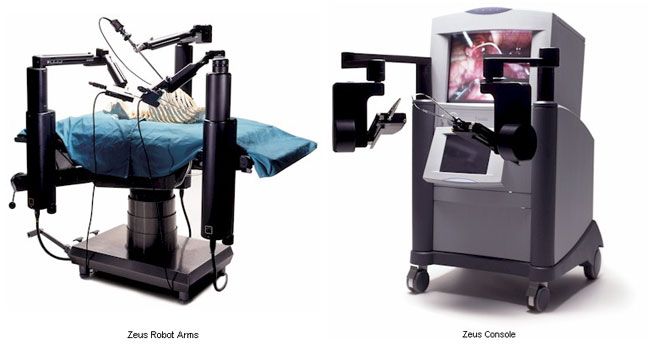NEEMO 7: NASA'S Undersea Robotic Telemedicine Experiment

The Zeus robotic surgical system will be used to perform a gall bladder removal on a special training dummy. The following circumstances are unusual: the experiment is being carried out sixty feel under the sea in the Aquarius Lab off Key Largo, Florida. And the experiment is being performed by NASA; if this experiment is successful, astronauts will eventually be able to recieve emergency care while serving on board the International Space Station.
The Zeus system (see image in left siderail) is controlled by a surgeon sitting at a remote console. In the NEEMO 7 experiment, the "patient" is off Key Largo and the surgeon is in Canada, 1300 miles away. NASA officials would like to have a safe alternative to bringing an astronaut back down from the space station - at a cost of 500 million dollars. The system actually has a number of advantages right here on Earth; fatigue is reduced because the surgeon does not need to constantly hold instruments and ordinary muscle tremors are filtered out.
Telemedicine also played a role in the excellent science fiction novel Starfish by Peter Watts. The primary action in the novel takes place near a deep undersea rift; as with astronauts, it is very time-consuming and expensive process to retrieve workers from these depths. So, the author posits the use of a medical mantis :
There's this praying mantis a meter long, all black with chrome trim, hanging upside down from the ceiling of the Medical cubby. ..it hovers over his face, jointed arms clicking and dipping like crazy articulated chopsticks... The mantis stops in midmotion, its antennae quivering... "Hello, er-Gerry, isn't it?" it says at last. "I'm Dr. Troyka." (Read more.)
Read more about NEEMO 7 at Scrubbing up for robotic surgery in space . You might also like How Robotic Surgery Will Work .
(This Science Fiction in the News story used with permission from Technovelgy.com - where science meets fiction.)
Sign up for the Live Science daily newsletter now
Get the world’s most fascinating discoveries delivered straight to your inbox.











